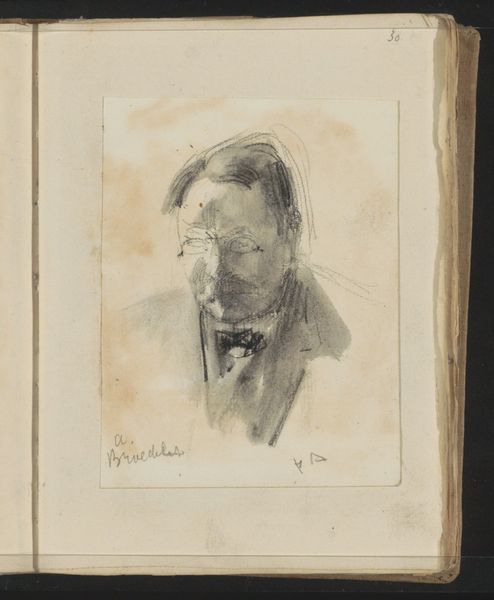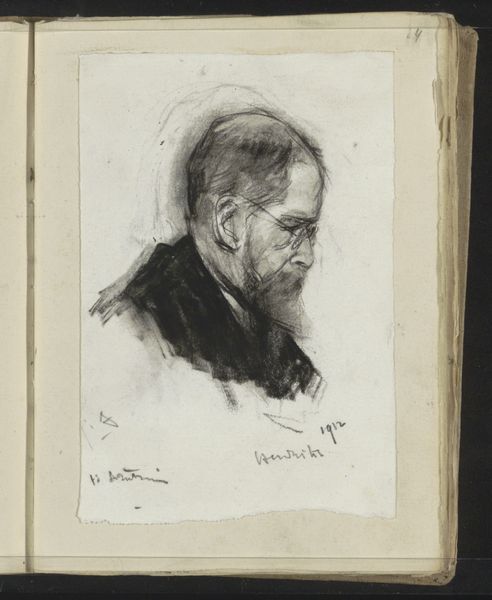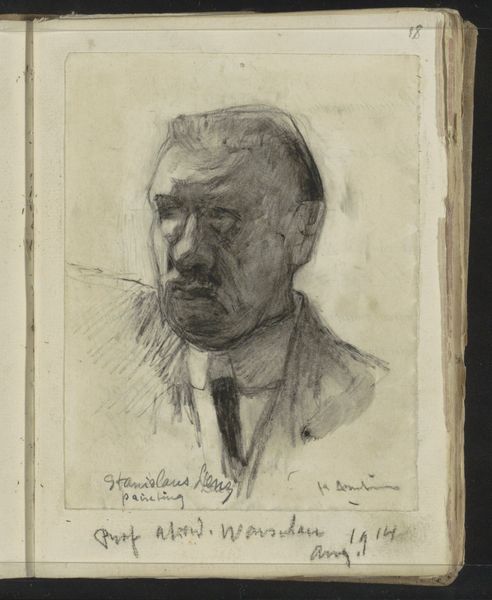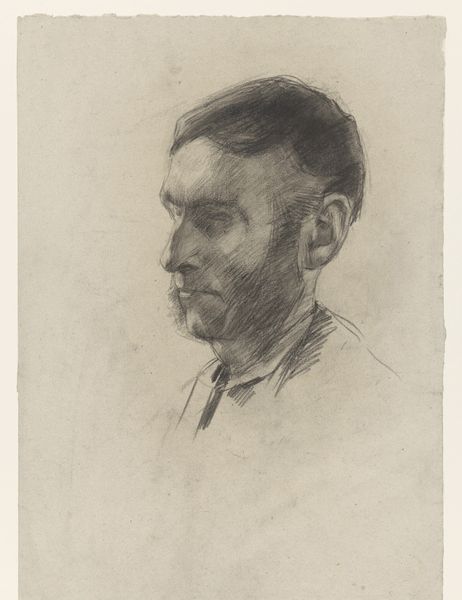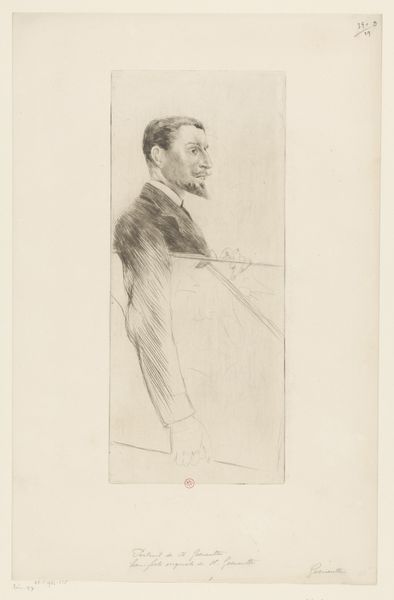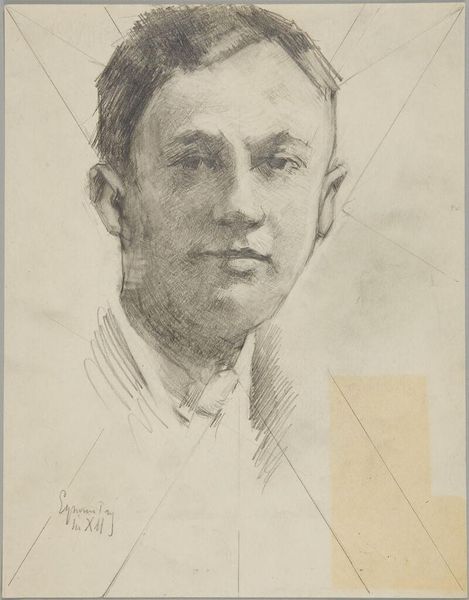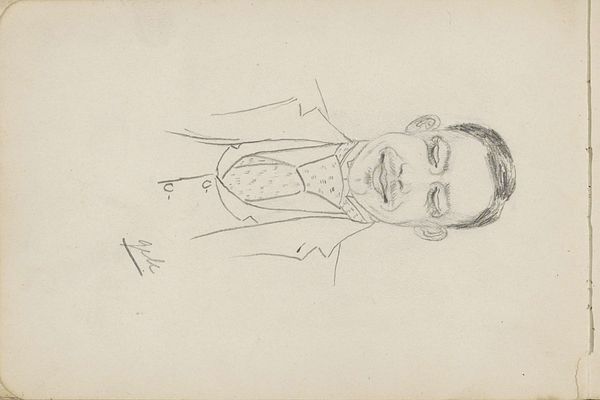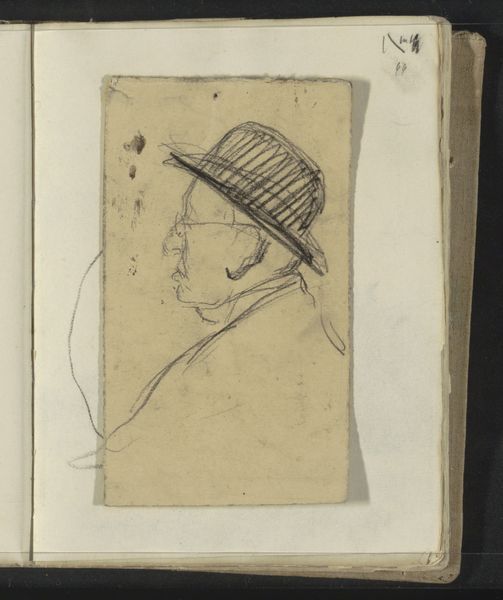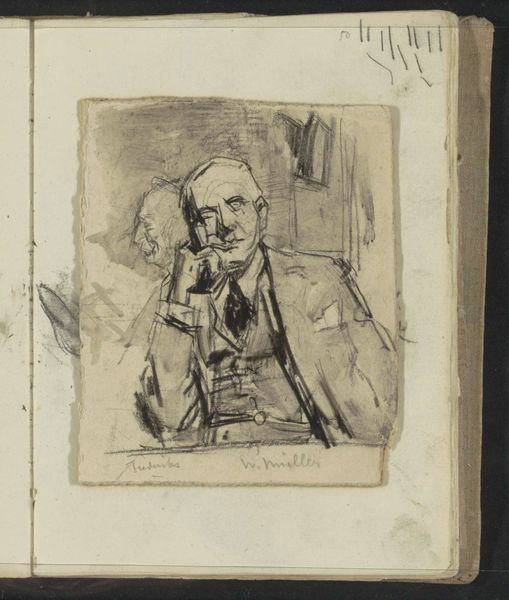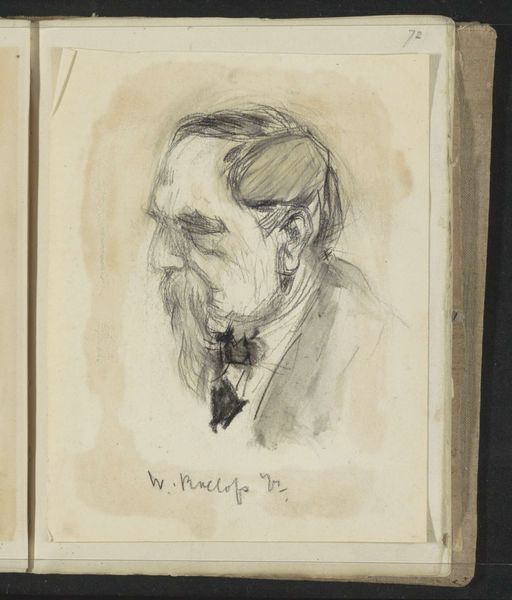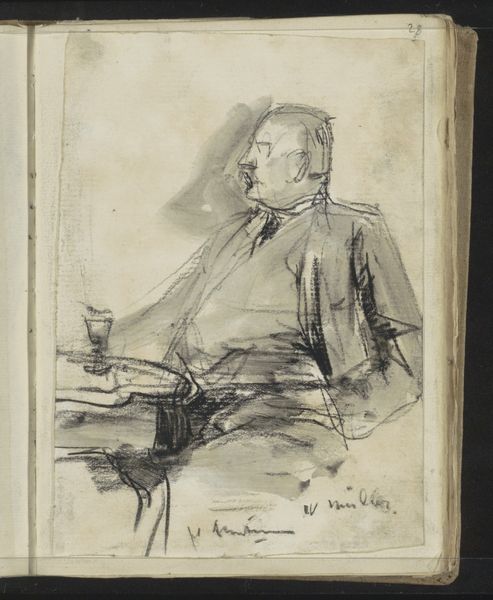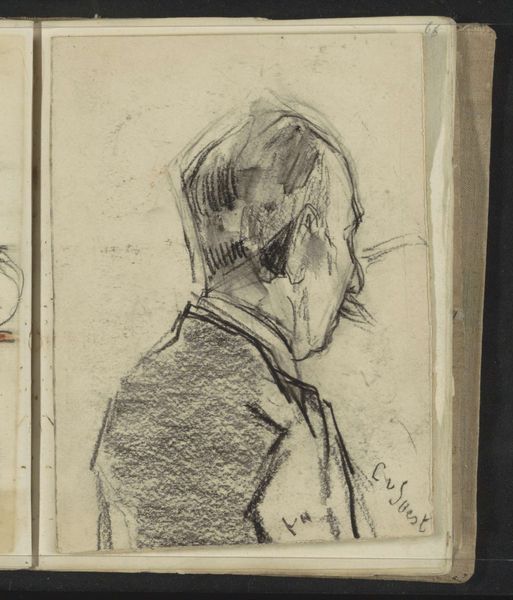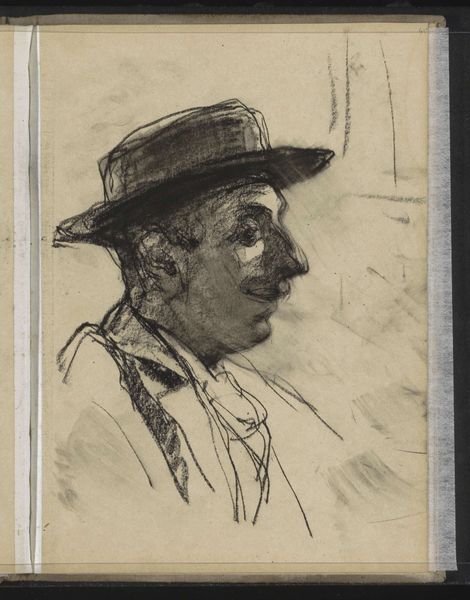
Copyright: Rijks Museum: Open Domain
Curator: We’re looking at a pencil drawing, "Portret van kunstenaar Ype Wenning" by Floris Arntzenius, created sometime between 1883 and 1914. It is an evocative study of the artist, Wenning. Art Historian: The very first impression it gives is a feeling of introspection; he seems lost in thought. Notice the soft lines— almost as if Wenning is fading, a memory captured lightly on paper. Curator: Indeed. Consider how Arntzenius, a contemporary of Wenning, portrays him not as a titan of the art world, but with a quiet vulnerability. This speaks to shifting perceptions of masculinity during the period and of artistic identity. The looseness of the lines suggest perhaps it was produced in the context of shifting gender roles at that time. Art Historian: There’s a fragility there, yes, heightened by the medium. The quick sketch work lends a certain immediacy – we’re witnessing a private moment, glimpsed in the intimacy of the artist's studio. It reminds me of traditional mourning portraiture, preserving an ephemeral presence. I wonder about the story embedded within the pencil strokes, the story behind his somber eyes? Curator: And what does it mean to capture another artist’s image? This becomes a powerful symbol, pointing toward a dialogue, an exchange about art itself, that has roots in social critique. It makes me curious about their friendship: was this a true portrait, a fleeting impression, or a symbol of the tensions or solidarities among artists at that time? Art Historian: Possibly all of those layers are at play. I'm intrigued by how the drawing gives prominence to the face – almost a mask that makes me curious about the real individual underneath. He becomes both himself and every person who’s stared down their own reflection questioning their true essence. Curator: Absolutely. That kind of universality helps us access discussions about representation that persist to the current moment: who gets depicted and how. Considering its dating, the artwork subtly pushes boundaries of its time, touching on personal artistic angst and even hinting at queer identity in art at the turn of the century. Art Historian: Seeing this work now helps us remember the value of small visual details which can carry large truths. What seemed so plain on the surface has brought forth much more through analysis and our dialogue! Curator: Yes, engaging in these cross-disciplinary readings makes me think of how artworks, like this very subtle piece, are cultural touchstones and serve as catalysts for more expansive discussions about identity, the meaning of representation, and social dynamics.
Comments
No comments
Be the first to comment and join the conversation on the ultimate creative platform.
